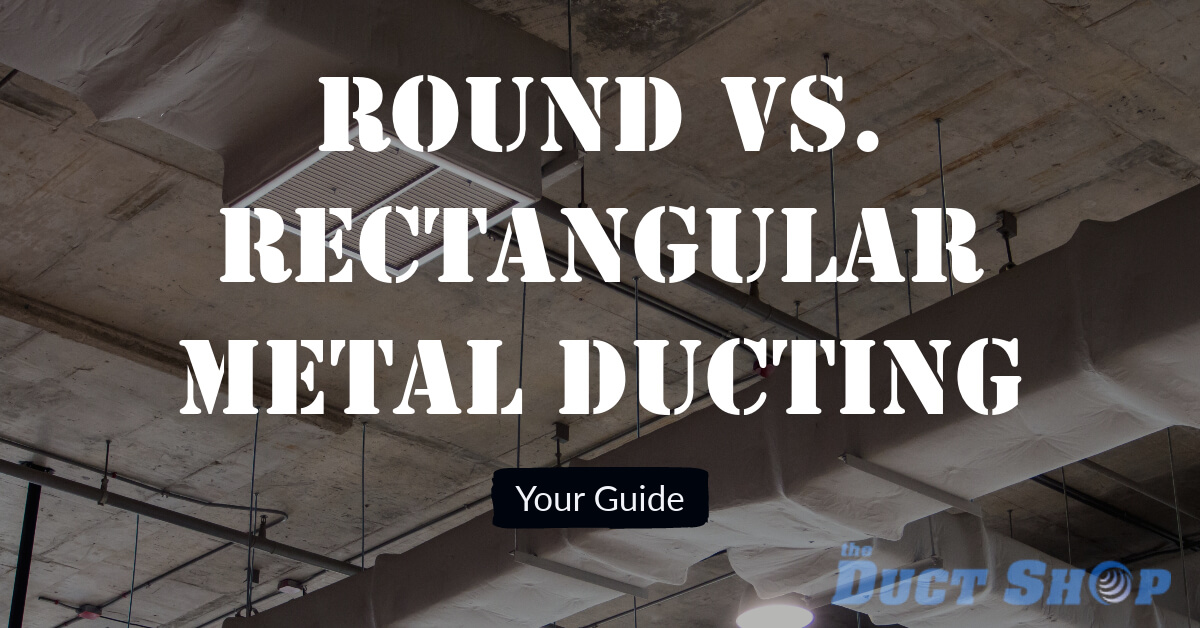
When it comes to deciding between round metal ducting and rectangular metal ducting for your HVAC or ventilation system, a multitude of crucial factors come into play. While round ducting tends to be the preferred choice for most applications, it's imperative to delve into the nuances of each option, as they possess distinct advantages and disadvantages. Your final decision should be guided by the unique requirements and priorities of your specific project. Be sure to consider duct sizing principles and economic aspects of metal ductwork when making your decision.
Optimizing Airflow Efficiency
Round Ducting: Renowned for its exceptional airflow efficiency, round ducts owe their superiority to their circular configuration. This minimizes friction, facilitating smoother airflow and reduced energy wastage. Over time, this can translate into significant cost savings in operational expenses.
Rectangular Ducting: Rectangular ducts, owing to their shape, may introduce more turbulence into the airflow, resulting in heightened friction and potentially reduced efficiency when compared to their round counterparts. Nevertheless, with meticulous design and sizing considerations, these drawbacks can be mitigated.
Maximizing Space Utilization
Round Ducting: Round ducts often reign supreme in terms of space efficiency. Their circular form enables snug configurations and effortless installation in confined areas or within ceilings, making them a pragmatic choice for spatially constrained settings.
Rectangular Ducting: In contrast, rectangular ducts tend to be bulkier and might necessitate more installation space. However, they can prove advantageous when harmonizing with specific architectural designs or accommodating spatial restrictions.
Balancing Cost Considerations
Round Ducting: The simplicity of round ducts, in terms of shape, typically translates into cost-effectiveness. Materials and labor costs for installation tend to be lower, bolstering their appeal from a budgetary perspective.
Rectangular Ducting: Rectangular ducts, due to their intricacies in design and the requisite additional fittings, may entail higher fabrication and installation expenses.
Addressing Aesthetic Concerns
Round Ducting: While round ducts excel in functionality, they may not always be aesthetically pleasing, particularly when exposed in visible areas. Nonetheless, they often blend seamlessly into ceiling spaces, offering an unobtrusive appearance.
Rectangular Ducting: Rectangular ducts can be customized to harmonize effortlessly with architectural elements, rendering them a favored choice in scenarios where aesthetics take precedence.
Tailoring to Customization and Space Constraints
Round Ducting: Round ducts, due to their inherent shape, exhibit limitations in adapting to custom configurations. Thus, they may not be the optimal choice for projects with unique spatial constraints.
Rectangular Ducting: Rectangular ducts offer greater flexibility, as they can be customized to suit specific spatial requirements. This versatility makes them an attractive option for projects characterized by irregular layouts.
Maintenance and Cleaning Considerations
Round Ducting: Round ducts tend to feature fewer nooks and crannies where dirt and debris can accumulate, simplifying the cleaning and maintenance processes.
Rectangular Ducting: In contrast, rectangular ducts may present more surfaces susceptible to collecting dust and debris, necessitating more thorough and meticulous cleaning efforts.
In summary, round ducting often emerges as the default choice due to its efficiency, ease of maintenance, space utilization advantages, and cost-effectiveness. Nevertheless, the selection between round and rectangular metal ducting should be underpinned by a meticulous evaluation of your project's distinctive requirements. Collaborating with HVAC professionals and ducting experts can furnish you with valuable insights, ensuring an informed decision that aligns seamlessly with your precise objectives and budget constraints.

